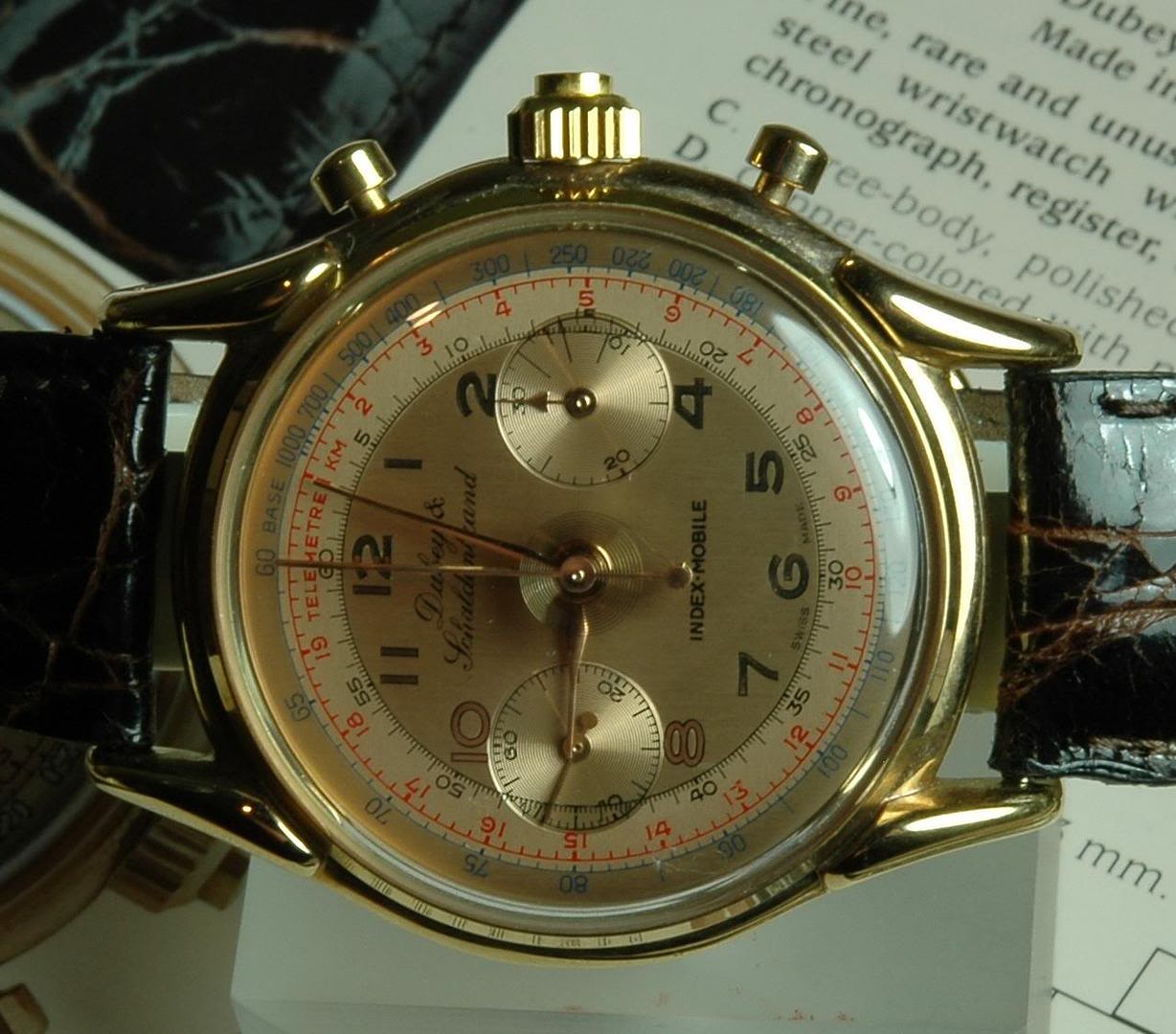| Informational Websites | ChronoMaddox -- the legacy of Chuck Maddox | OnTheDash -- vintage Heuer website | Zowie -- Omega information |
| Discussion Forums | ChronoMaddox Forum | Heuer Forum | Omega Forum |
| Counterfeit Watchers | ChronoTools Forum | ChronoTrader Forum |
|
|
The largest independent, non-commercial, consumer-oriented resource on the Internet for owners, collectors and enthusiasts of fine wristwatches. Online since 1998. | |||||||
|
||||||||
|
||||||||
 |
Vintage Heuer Discussion Forum
The place for discussing 1930-1985 Heuer wristwatches, chronographs and dash-mounted timepieces. Online since May 2003. | ||||||
| |||||||
| |||||||
: Important Collectors’ Wristwatches, Pocket Watches, Clocks
: & Horological Tools / Imperial Treasures
: LOT 39
: Heuer, “Index Mobile”, case No. 3295, case No. 656.
: Made in the 1950s. Very fine 18K pink gold
: wristwatch with square button split-chronograph, register,
: tachometer and telemeter with an 18K pink gold buckle. To be
: sold without reserve
: C. Three-body, solid, polished and brushed, concave bezel,
: lapidated lugs, snap-on case back. D. Two-tone, black and gray
: with painted dot indexes and Arabic numerals, subsidiary dials
: for the seconds and the 30-minute register, inner minute/seconds
: division with every five Arabic numerals, outer telemeter scale,
: outermost tachometer scale. Pink gold feuille hands. M.
: 14’’’, rhodium plated, 17 jewels, straight line lever
: escapement, monometallic balance, self-compensating flat balance
: spring, shock absorber, index regulator. Dial signed Heuer,
: movement signed Heuer Leonidas, case numbered.
: Diam. 36 mm. Thickness 13.5 mm.
: So it is from the 1950's, with a Heuer-Leonidas movement? Would
: you buy a Mercedes gullwing, circa 1955, with Daimler-Chrysler
: marked on the valve covers? Is this a fake or maybe a sloppy
: description in the auction catalog?
: Jeff
Well, the Index-Mobile simple rattrapante movement adaptation was patented by Dubey & Schaldenbrand in about 1947. It was nearly always added to a Landeron movement. Here's my example:

The "index-mobile rattrapante" is a simple mechanism (compared to a true rattrapante or split-seconds function) by which depressing the coaxial button on the crown stops the split second hand. Upon releasing it, the center, visible hairspring returns the split second hand to the primary second hand. The split second hand only stops while the coaxial button is depressed.

Dubey & Schaldenbrand, I understand, licensed the movement to others, but I have no idea to whom and when.
So, I can state the movement must be newer than 1947, and very little else, definitively.
| Chronocentric and zOwie site design and contents (c) Copyright 1998-2005, Derek Ziglar; Copyright 2005-2008, Jeffrey M. Stein. All rights reserved. Use of this web site constitutes acceptance of the terms of use. | CONTACT | TERMS OF USE | TRANSLATE |